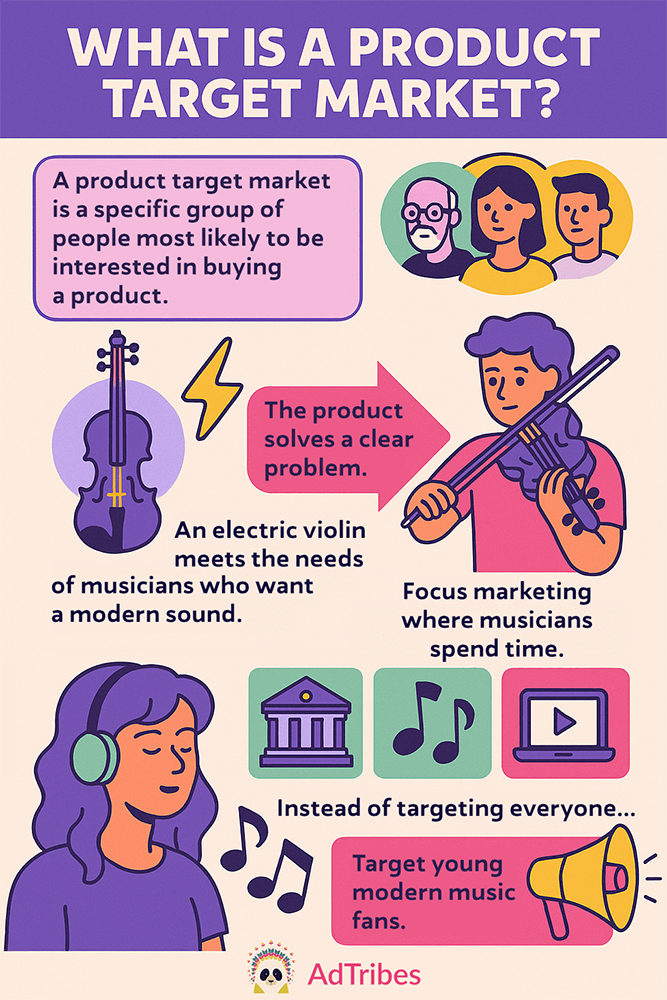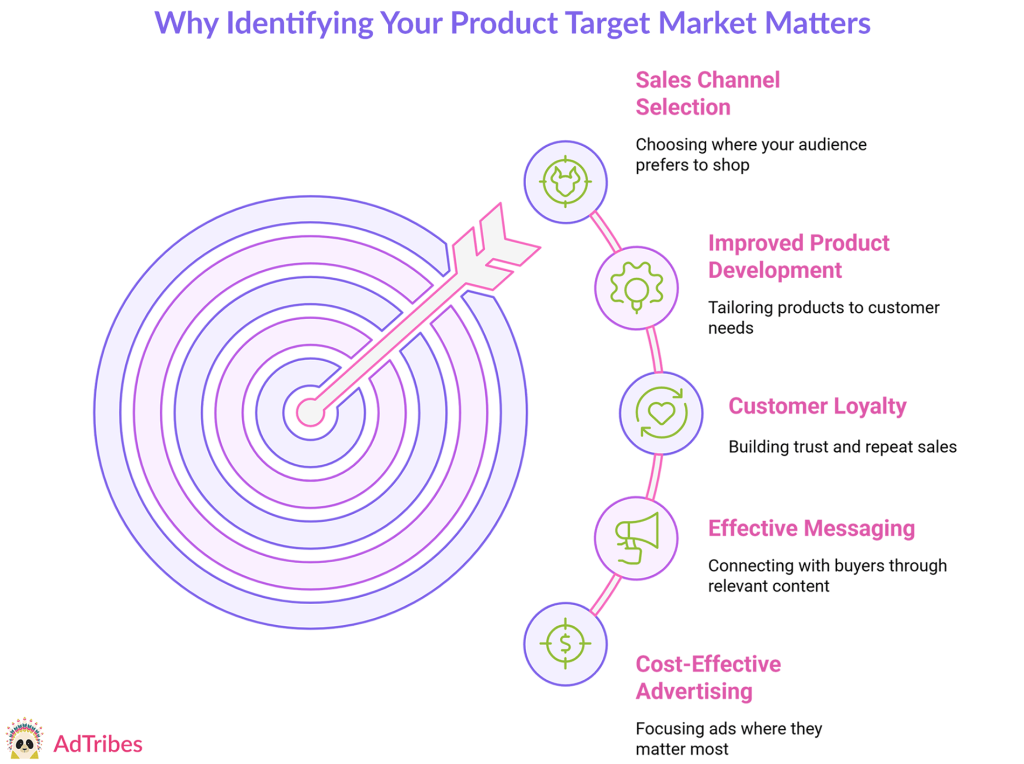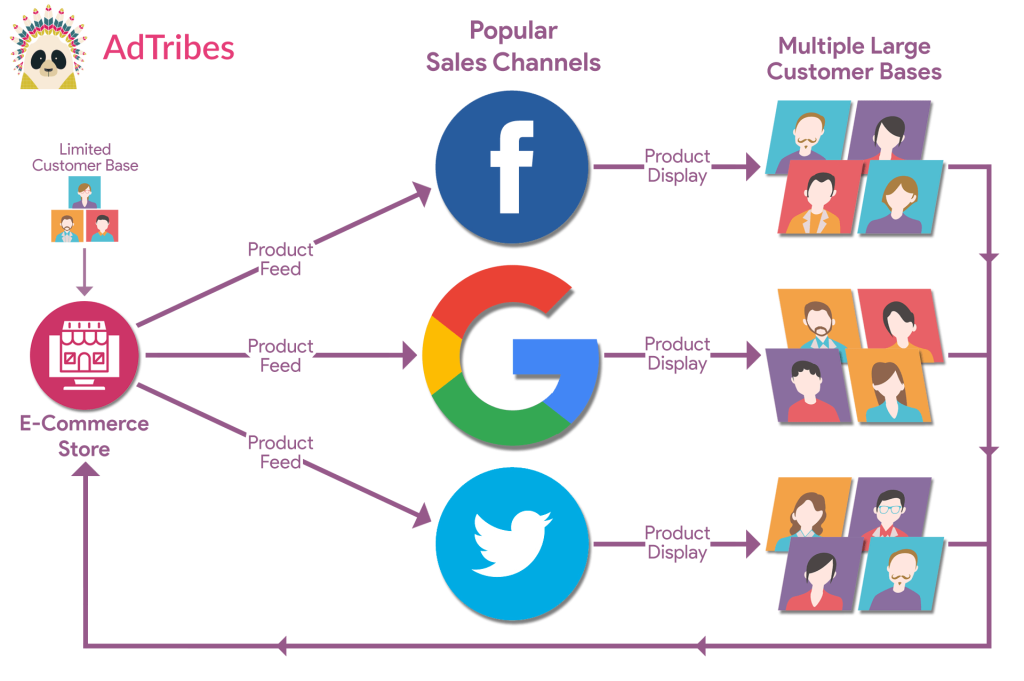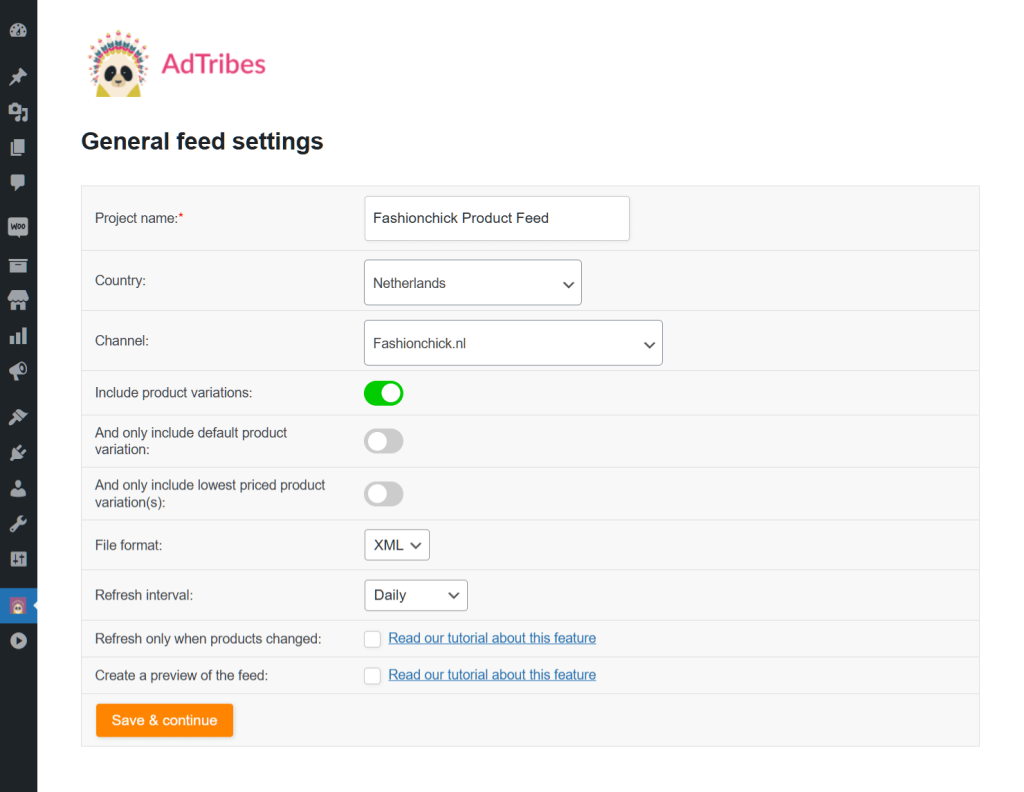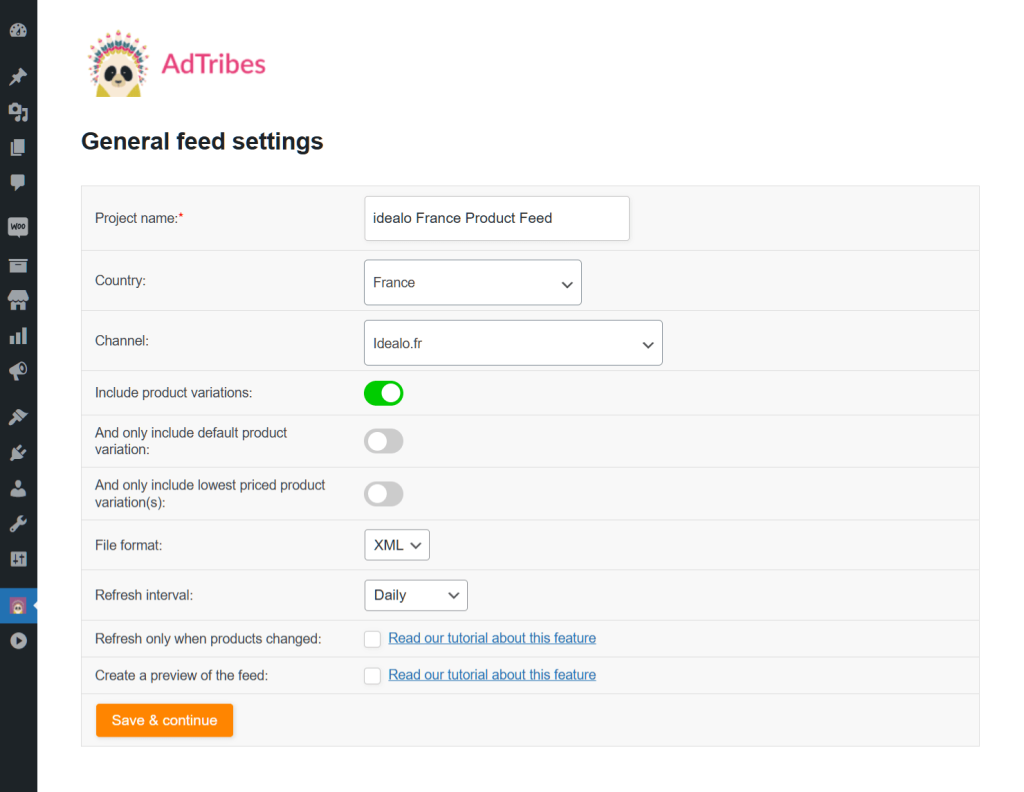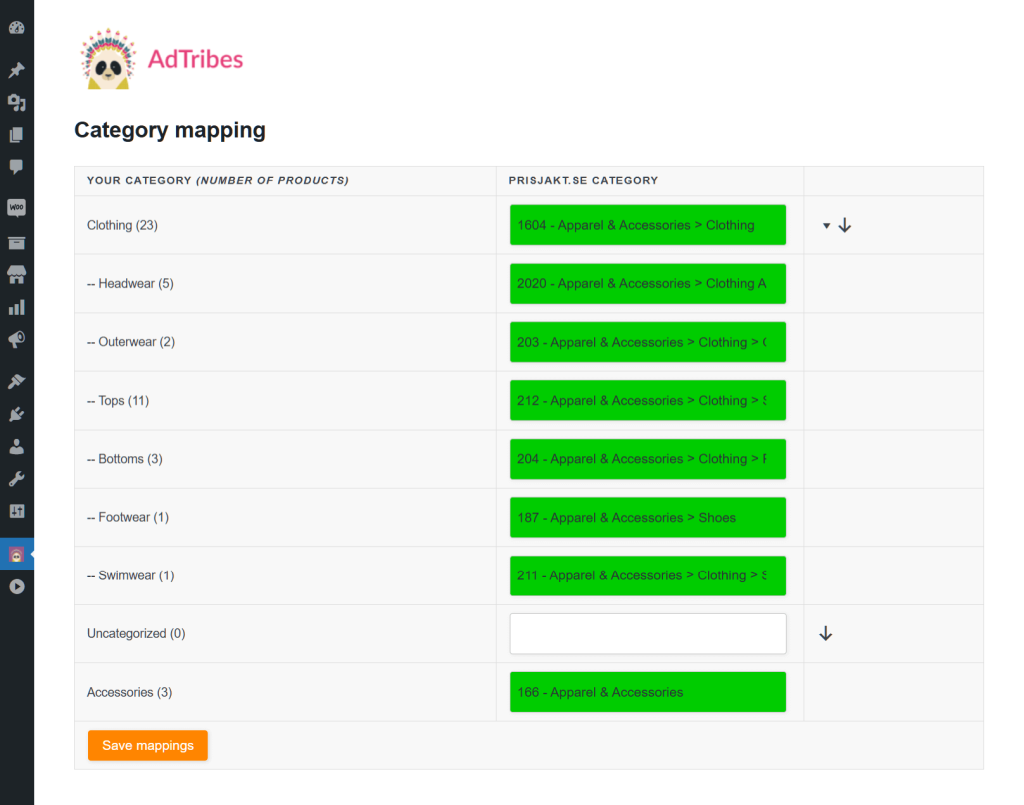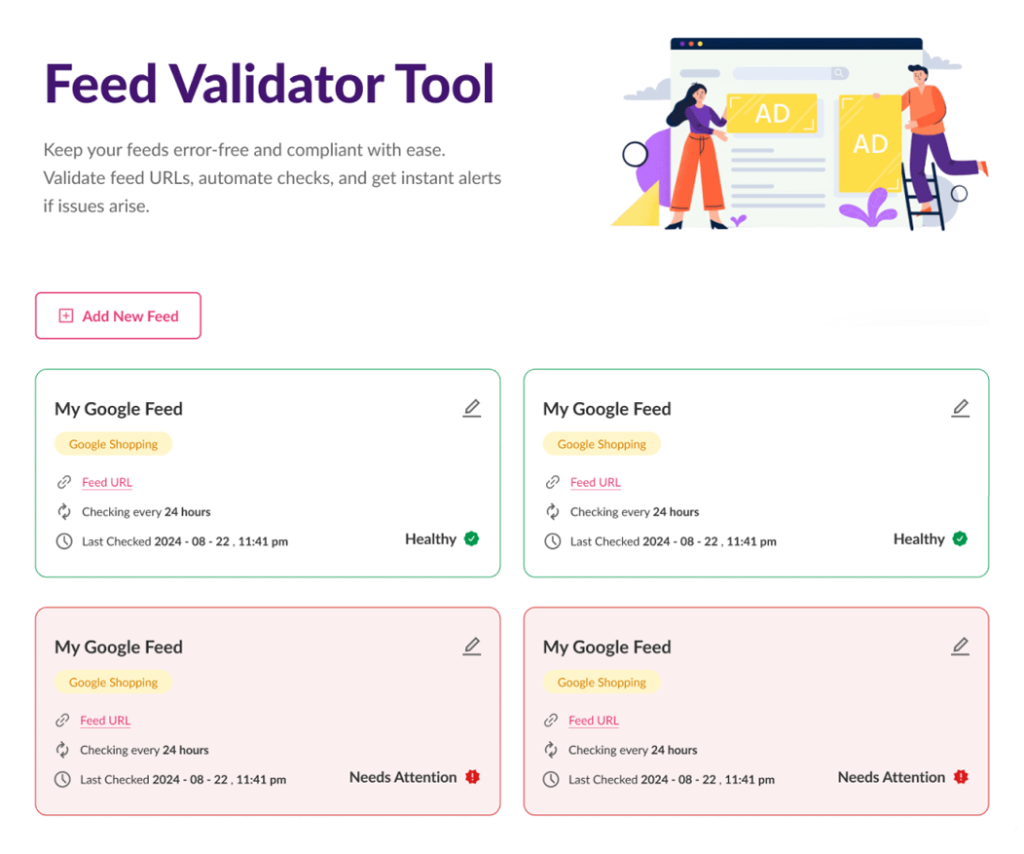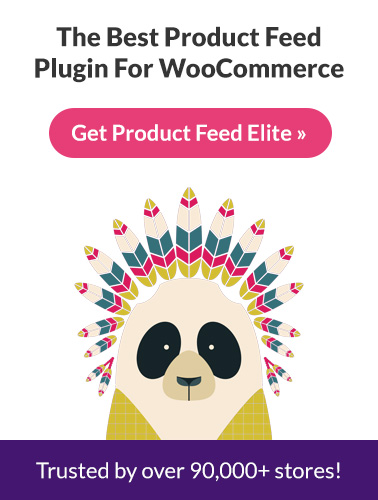
If you’re running an online store, knowing your product target market is crucial. After all, it points you toward the people most likely to want your product. Think of it like a compass showing the best direction to find your customers.
Defining this market guides marketing and sales, helping businesses know where to spend effort and how to speak to buyers. This focus turns guessing into clearer steps.
This guide explores what a target market means and why it matters for WooCommerce businesses. It also shows how a useful tool can help reach specific markets across multiple sales channels with ease.
So let’s get started!
- I. What Is A Product Target Market?
- II. Why Does Identifying Your Product Target Market Matter?
- III. How To Define Your Product Target Market
- 1. Research demographics like age, location, and gender
- 2. Understand customer interests and problems
- 3. Analyze competitors to find market gaps
- 4. Use social listening and online trends
- 5. Study buying behavior and habits
- 6. Identify lifestyle and values
- 7. Consider psychographics
- 8. Segment by usage rate or loyalty
- 9. Test and refine with real customer feedback
- IV. How Product Feeds Help You Target Specific Markets
- Conclusion
I. What Is A Product Target Market?
A product target market, or simply target market, is a specific group of people who are most likely to be interested in buying a product. These people usually share common characteristics, such as age, location, or needs. Identifying this group helps businesses focus their marketing efforts where they will have the most impact.
Products are made to meet the specific wants or solve problems of the target group.
For example, an electric violin is designed for musicians who want a modern sound and the ability to play amplified music. It meets the needs of players who enjoy performing with bands or experimenting with different styles.
The product addresses an apparent problem for this group, providing them with a way to stand out and be heard. When a product fits what its target market wants, it becomes more useful and appealing to the right people.
Knowing this, a business that sells electric violins can focus its marketing on places where these musicians already spend time. That includes music schools, band clubs, and online spaces for young players.
Instead of reaching out to everyone, it makes more sense to sponsor music events or run ads on platforms popular with 18- to 30-year-olds who enjoy modern music. This way, the message reaches people who are more likely to care.
Product target market vs broad audience
A broad audience includes many different types of people, with different needs and interests. A target market focuses on a specific group of people who are more likely to want and buy the product.
Focusing on a target market means reaching the people who really care about your product instead of trying to appeal to everyone.
Product target market vs product target audience
These two terms sound similar, but they’re not the same.
The target market is the larger group of people who are likely to buy your product. It includes everyone who shares common needs or interests related to what you sell.
On the other hand, the product target audience is more specific. Basically, it refers to the exact group of people you’re trying to reach with a message or campaign.
For example, if your product is an electric violin, the target market might be musicians aged 18 to 30. But your ad campaign might only focus on music students aged 18 to 22. That smaller group is your target audience.
Understanding the difference helps you talk to the right people in the right way.
II. Why Does Identifying Your Product Target Market Matter?
Knowing your target market makes everything easier. It’s like aiming with a spotlight instead of shining a flashlight in every direction.
Here are the reasons why identifying your target market is essential:
1. Saves money by focusing ads where they matter most
Knowing your ideal customers helps you spend advertising dollars wisely. You can place ads where the people most likely to buy actually spend time.
For example, a company selling superhero action figures can advertise on fan websites and social media groups where collectors are active. This targets real buyers, not just random people.
2. Creates messages that connect with buyers
Understanding your market lets you speak in a way that matters to them. You can highlight how your product solves their specific needs or fits their lifestyle.
For instance, a business that sells handcrafted outdoor swings can focus on comfort and style for people who want to turn their porches into cozy spots for lounging, reading, or hosting friends.
3. Builds customer loyalty and repeat sales
When customers feel a product suits them well, they’re more likely to come back. This shows you understand their preferences and builds trust over time.
A sundress brand that offers comfortable styles for warm weather can keep customers returning by introducing fresh designs that fit their taste.
4. Improves product development
Knowing your target market helps guide product changes or new features. You can create items that better meet the needs or preferences of your key customers.
For example, a company making artisanal hot sauces might add milder or exotic flavors based on customer feedback from adventurous food lovers.
5. Helps choose the right sales channels
Different groups prefer to shop in different places. Knowing your market helps decide where to sell your products for the best results.
For example, an online Asian grocery might focus on promoting through food blogs, recipe YouTube channels, and Facebook groups for home cooks who love Asian cuisine. These are places where shoppers already look for new ingredients and cooking ideas.
Understanding your market leads to smarter choices. You spend less, connect better, and keep the right people coming back.
III. How To Define Your Product Target Market
A target market isn’t something you just guess. You find it by looking closely at your buyers and the world around your product.
This part doesn’t have to be hard. You just need to ask the right questions and notice the right patterns.
Here are a few simple steps to help you find your market.
1. Research demographics like age, location, and gender
Start by learning who your buyers are. Look at their age, where they live, and other simple details like gender or income. These basics help paint a clear picture of your typical customer.
For example, if you sell cosplay costumes, you might focus on young adults aged 18 to 30 who live in cities and enjoy attending fan conventions or themed events. Event organizers can enhance the attendee experience with streamlined registration processes. To help guests check in quickly, a badge printing kiosk allows them to print their own badges on-site, reducing wait times and improving the overall event flow.
Knowing this helps you create marketing that speaks to their passion for dressing up and participating in cosplay culture. This way, your message connects with the right people and avoids wasting effort on less interested groups.
2. Understand customer interests and problems
Look closely at what your buyers enjoy and the challenges they face. This helps you see how your product can fit into their daily lives or solve a problem they have.
Selling indoor herb kits? You might want to focus on apartment dwellers who love cooking but don’t have space for a garden. These customers want fresh herbs but need a compact, easy way to grow them inside.
By understanding this, you can highlight how your product brings the joy of gardening indoors, making cooking more convenient and fun. This connection makes your product feel more relevant and useful to your target market.
3. Analyze competitors to find market gaps
Look at other businesses that sell products like yours. Notice what they do well and where they might be missing the mark.
For example, if no one offers eco-friendly packaging for collectible toys, and you do, that could be your advantage. Filling a gap like this helps you stand out and attract customers who care about the environment.
Finding these gaps lets you offer something different that your competitors don’t.
4. Use social listening and online trends
Watching social media and online forums helps you hear what people say about products like yours. It shows you what topics and problems matter most to your potential buyers right now.
This real-time insight helps you spot new trends and changes in customer interests. For example, if people start talking a lot about eco-friendly products, you can highlight that in your marketing.
When you stay tuned to these conversations, you can adjust your product or message quickly. This keeps you connected to what your customers really want.

5. Study buying behavior and habits
Pay attention to when and how customers buy products like yours. Notice if they shop more at certain times of the year or prefer buying online versus in stores. Understanding these patterns helps you plan your sales and marketing better.
For example, a company selling holiday-themed candles might see most sales happen in November and December.
Knowing this, they can prepare special promotions during those months and focus advertising where shoppers are most active. This way, the business matches its efforts to how customers actually shop.
6. Identify lifestyle and values
Look beyond basic facts to understand what your customers care about and how they live. This helps you connect with them on a deeper level and shape your product or message to fit their way of life.
If you sell reusable water bottles, your target market might include people who value sustainability and want to reduce plastic waste. Knowing this lets you highlight those benefits in your marketing to attract the right buyers.
7. Consider psychographics
Psychographics include things like attitudes, opinions, and personality traits. These go beyond simple facts like age or location and reveal what really motivates people.
Knowing these helps you connect with customers on a deeper level. For example, if you sell outdoor gear, you might target adventurous types who value freedom and exploration.
This kind of insight lets you shape your product and marketing to match how your customers think and feel. It makes your message feel more personal and relevant.
8. Segment by usage rate or loyalty
Not all customers use a product the same way. Some might use it every day, while others only buy it once in a while. Thus, identify your heavy users or most loyal fans so you can focus your marketing where it counts the most.
For example, a company selling coffee could find that daily drinkers make up their most valuable group.
Targeting these frequent buyers with special discounts or loyalty programs can keep them coming back. This helps build a steady base of repeat customers and boosts long-term sales.
9. Test and refine with real customer feedback
Share your product with a small group of people who fit your target market. Ask them what they like about it, what’s missing, and what could be improved. Use their feedback to make changes that better meet their needs.
For instance, a new brand selling vegan snack boxes might first offer samples to plant-based eaters. Based on their opinions, the company can adjust the snack choices or packaging to better suit their preferences.
This process helps create a product that truly connects with customers.

Defining your market gives your business a solid place to start. It shapes everything from how you talk to buyers to where you find them.
IV. How Product Feeds Help You Target Specific Markets
AdTribes is a WooCommerce plugin that helps you sell on channels like Google Shopping, Facebook, and hundreds more.
It works by giving you full control over product feeds—files that contain your products’ names, descriptions, URLs, and other details. Basically, you send these feeds to sales platforms so they can showcase your products to their users.
As you can imagine, this can get more eyes on your products, bring more visitors to your store, and help boost your sales.
When used properly, product feeds are especially effective at helping you reach the exact markets that want what you’re selling.
Here are the features that make AdTribes product feeds great for reaching your target markets:
1. Wide range of feed templates for multiple channels
AdTribes comes with over 100 built-in templates, so you can easily make product feeds for search engines, ad networks, social media platforms, online marketplaces, and price comparison sites around the world. This helps you get your products in front of the right people, wherever they shop.
For example, if you sell fashion items, you can pick a template that sends your listings to a fashion site.
2. Support for country targeting
You can create separate feeds for different countries to enable precise geographic and demographic targeting. You can even switch currencies and languages as needed. This lets you tailor your listings to local audiences, follow country-specific rules, and show the right products in the right way for each market.
For example, you might show prices in euros and product descriptions in French for customers in France, while using US dollars and English for buyers in the United States. This helps your listings fit each local market better.
3. Customizable filters and rules for precise targeting
Using customizable conditions, you can choose which products to include or leave out in your listings. This lets you adjust your feeds to fit what different markets want, so you only show products that matter to each group.
For instance, you might only include winter coats for colder regions or leave out certain items that don’t sell well in specific countries. This lets you adjust your feeds to fit what different product target markets want, so you only show items that matter to each group.
4. Flexible category and field mapping
You can match your product categories to the ones used by different platforms or regions. This makes sure your products show up the right way in local searches and follow local rules.
If you sell shoes, your store might use a category called “Footwear,” but a specific marketplace might use “Shoes & Accessories.” Mapping your categories means your products will appear in the right place on that marketplace, making it easier for customers to find them.
5. Automatic feed refreshing and validation for accurate listings
Your product feeds update automatically on a schedule to keep your info fresh and ensure that local rules are followed. Plus, the system checks for errors all the time, so problems get fixed before they affect your listings.
For example, if a product price changes or goes out of stock, the feed updates right away. Also, if there’s a missing required field, the system spots it early so your listing doesn’t get rejected by the sales platform.
6. Google Analytics UTM tracking integration
You can add tracking codes (UTM parameters) to your product links. This helps you see how well each feed is doing in different markets, so you can make smarter decisions to improve your campaigns.
Let’s say you sell shoes in both the US and Canada. You can add special tags to your product links that tell you where shoppers are coming from. This helps you see if more people buy from your US ads or your Canadian ads, so you know which country to focus on.
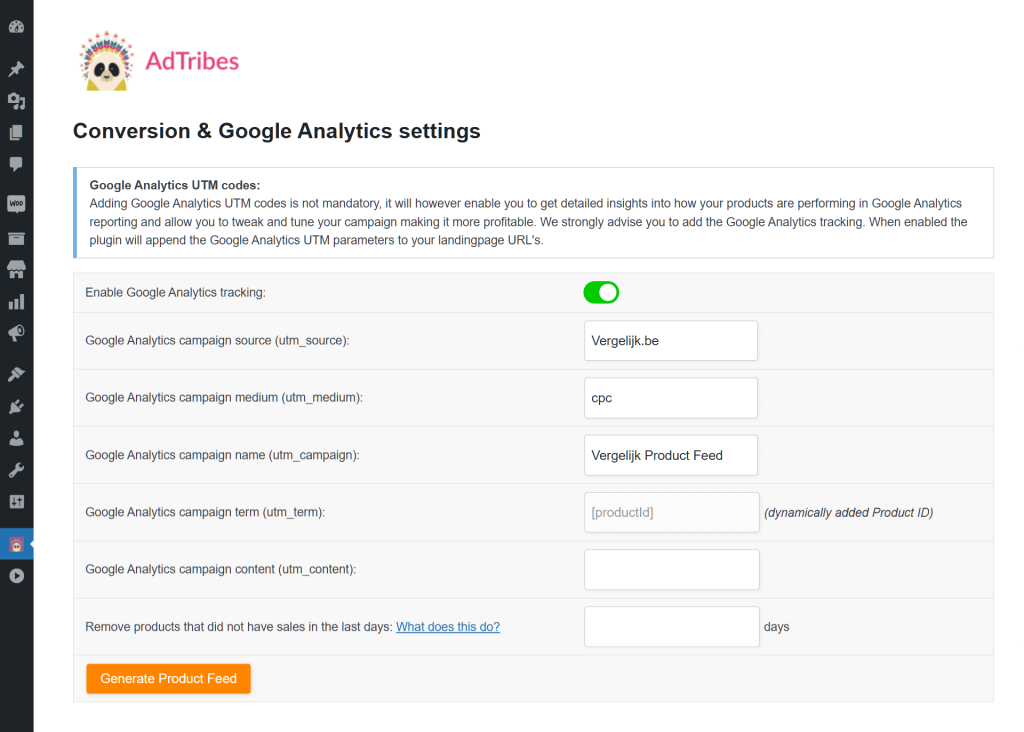
Conclusion
Understanding your product target market is key to making smarter marketing choices and boosting sales. When you know exactly who your customers are, you can tailor your efforts to reach them more effectively.
And with product feeds, you can make it easier to connect with the right audience across multiple channels, helping your store grow with less guesswork.
To summarize, this guide explored the following key concepts:
- What is a product target market?
- Why does identifying your target market matter?
- Strategies for defining your target market
- How product feeds help you target specific markets
Are you interested in using product feeds to target specific customers more effectively across different sales channels? If so, explore AdTribes today to see how it can strengthen your WooCommerce business!
